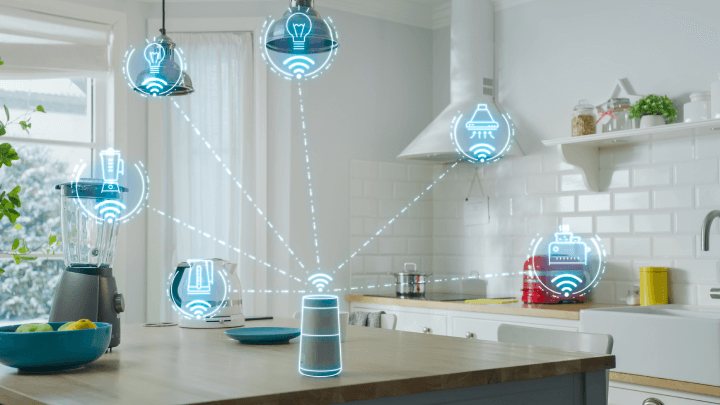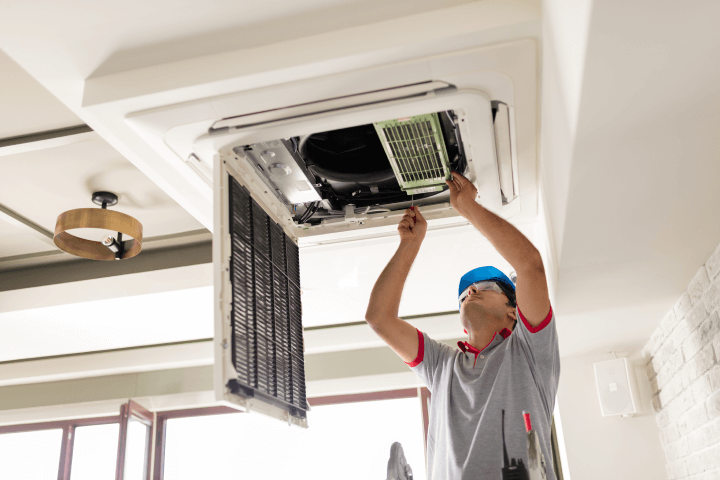Smart Home Success Story: Intelligent Device Detects a Faulty HVAC
Insights | 07-08-2023 | By Robin Mitchell
Imagine a home that can diagnose its own problems and even call for repairs. Sounds futuristic? A recent story published on The Verge shows that we might be closer than you think, but there are still hurdles to overcome. This article explores the challenges smart devices face in the home, what happened with one homeowner and their HVAC, and how this demonstrates the dire need for better communication between devices.
The recent incident described by The Verge highlights the potential of smart home devices but also the challenges they face. While they can provide convenience and security, the lack of interoperability and self-diagnosis capabilities can lead to unexpected problems. This calls for a more integrated approach to smart home technology, where devices can communicate seamlessly and make intelligent decisions without human intervention.

What challenges do smart devices face in the home?
The concept of attaching the word “smart” to any internet-connected device is not new and has been the standard practice for the better part of a decade. As we have covered in another article, having an internet connection alone does not make a device smart. In order for something to be truly smart, it not only needs to be able to exchange data with other devices but also make decisions based on that information without any human input.
The integration of smart devices is not just about connectivity; it's about creating a cohesive ecosystem where devices can understand each other and work together. This requires a standardised approach, where manufacturers adhere to common protocols and guidelines. The introduction of protocols like Matter is a step in the right direction, but more needs to be done to ensure that devices from different manufacturers can communicate effectively.
For example, IoT thermostats are far from intelligent if all they do is control the heating system over a network. If, instead, that thermostat was also able to connect to motion sensors, door sensors, and cameras to determine the occupancy of individual rooms, that device would then be able to make smart decisions to reduce energy wastage.
But making such devices smart is no small feat. Primarily, the biggest hurdle in making a connected ecosystem intelligent is to have an underlying protocol and standard that allows different devices across various manufacturers to communicate. While this is being helped with the introduction of protocols such as Matter, it is still difficult to get device manufacturers to support these environments if they can produce their own proprietary systems and devices.
Even if devices can be connected together, trying to orchestrate different devices across different manufacturers can be challenging. For example, should a thermostat have the final say in what devices do, or should it be the doorbell?
In these instances, a centralised controller is likely needed, some cloud-based technology that analysis all of these different devices to make decisions. But if that software runs in the cloud (as opposed to a locally executed system), then any loss of the internet can result in a system-wide failure for responsiveness. Thus, some future centralised controller may need to run locally and, therefore, require a home server that remains functional even when internet and power are disconnected.
How a user’s smart home helped prevent a disaster.. or sort of
In a story recently published by The Verge, one homeowner described their experience with smart devices and how they were able to prevent a potential disaster at their property when away.
To summarise the situation, a homeowner who was on their way home (US) after a vacation in the UK received a notification that their bedroom thermostat was reading an unusually high temperature. Despite requesting the HVAC to cool the room in question, the temperature had risen by around 5˚C. After checking with other thermostats in the home, the owner was able to verify that the thermostat was indeed functioning correctly and not just reporting a faulty reading.

The Decision-Making Dilemma: Human Intervention in a Smart Home
The trouble with the situation was that the owner’s pet rabbit was living in a separate room in the house, and if the temperature became too high, the rabbit would overheat and die. Luckily, the thermostats in the other rooms were showing cooler temperatures, indicating that the problem was solely the bedroom. Furthermore, multiple devices across the home, including Apple HomePods, Amazon Echo, and Philips Hue motion sensors, all have ambient temperature sensing capabilities, and they were all able to confirm the temperature results.
Once this issue was noted, the homeowner then turned to cameras at the back of the property to see if the HVAC was still operating. While it couldn’t be confirmed if the HVAC was producing cold air, it could be seen that its compressor was in use, indicating that it was trying to cool the room down.
At this point, the homeowner has to decide whether to get an engineer on a call-out to fix the issue while not being at the property or wait until they return home. If the call-out had been done, it would have been significantly more expensive as no one would have been at home (however, the use of smart locks would have allowed remote access to the property). Instead, the homeowner waited until they got home to have an engineer come around and diagnose the situation.
While the smart devices empowered the homeowner with the ability to remotely monitor their home and confirm results from multiple sensor systems, the lack of cohesion between the devices meant that all decision-making had to be done by a human. To make matters worse, the problem in the HVAC was a faulty capacitor that also plagued numerous other customers around the same time. If the HVAC had been integrated with connected technologies, it is possible that the manufacturer could have remotely identified this issue and automatically sent out technicians to fix damaged units.
The homeowner's experience with smart devices demonstrates the potential of these technologies but also the limitations. The ability to monitor and control the home remotely is a powerful feature, but the lack of integration between devices can lead to inefficiencies and potential risks. This highlights the need for a more holistic approach to smart home technology, where devices are not just connected but are also able to communicate and collaborate to make intelligent decisions.
How does this demonstrate the dire need for communication between devices?
If the devices in the story were able to operate autonomously, they could have self-diagnosed the situation, identified the issue, and then request repair operations from an authorised company. Even if a system requires human oversight in ordering services and parts, it would still be able to self-diagnose and make determinations as to what is wrong and why.
This could also be highly advantageous in situations where an empty home is able to take care of itself to some degree. For example, a leaking tap that is damaging the floor could trigger in an emergency plumber to fix the issue, with smart locks providing access and cameras to monitor their movement. If taken further, individual locks on each door could allow entry to rooms that are affected by the flooding, and areas, where a plumber may want to look at, could be authorised by the house under strict conditions.
So-called “smart devices” are available in all shapes, colours, and sizes, and while they can all provide numerous benefits, they are still far from being smart. How will this problem be solved? No one knows, but what can be said for certain is that engineers need to start thinking about centralised systems that can monitor and control a home, something akin to a virtual butler.
The future of smart home technology lies in the ability of devices to communicate and collaborate. This requires a shift from isolated, proprietary systems to a more open and standardised approach. Engineers and manufacturers must work together to create a unified ecosystem where devices can understand each other and work together to provide a seamless user experience. This will not only enhance the functionality of smart home devices but also pave the way for new innovations and possibilities in the field of home automation. The question remains: Are we ready to embrace a truly smart home?

